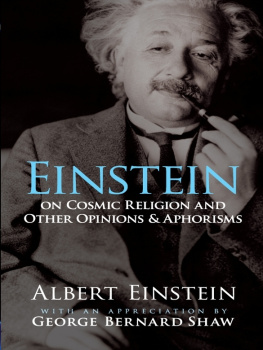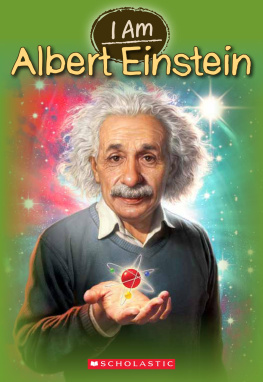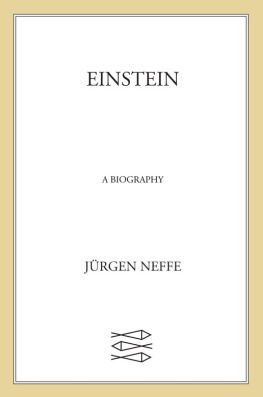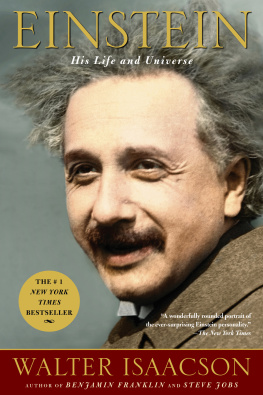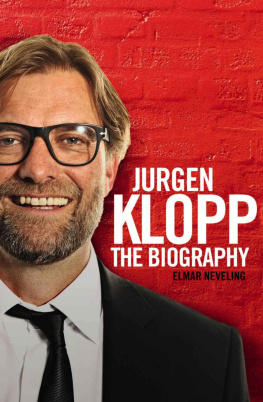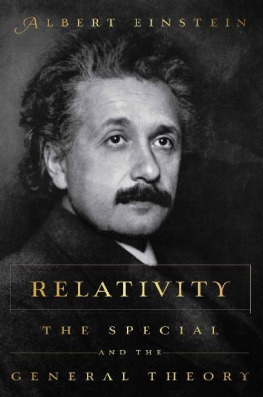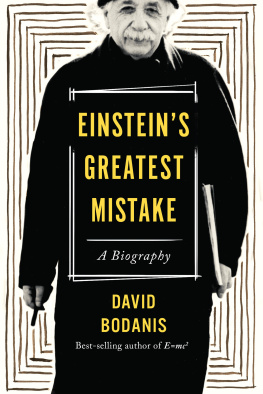T his book is an expanded version of the original German text, which was published in 2005 in Germany to great acclaim. The biography spent the better part of the Einstein Year on the bestseller list. Since the books original publication, the author has come across newly available information on Einstein, notably in the diaries of Jnos Plesch, who was Einsteins physician. Pleschs diary entries provide intriguing insights into Einsteins daily routines, the ups and downs of his health, and his scientific approach. This past year has also seen the publication of Volume Ten of Einsteins Collected Papers , which offers fresh perspectives on Einsteins relationships with family, friends, colleagues, and the public at large, as well as new information concerning his political outlook and how his scientific innovations were received in the academic community. This English-language edition of Jrgen Neffes biography of Einstein is one of the first to incorporate these newly published materials.
In translating Einsteins words, I cite the Collected Papers wherever they contain the pertinent passages. The Collected Papers , published by Princeton University Press, are a work in progress; at the time of this writing, they comprise ten hardbound volumes in the original German, along with English translations of selected passages in accompanying softbound volumes. These translations are the work of several individuals, and since their accuracy fluctuates, I have revised them where they were in need of updating or correction. I similarly refer the reader to other extant volumes of Einsteins correspondence, and to anthologiesof Einsteins writings that have appeared in English translation, but again, I have corrected inaccuracies and reworked infelicitous phrasings in the quoted texts.
I am fortunate to live in Princeton, within walking distance of Mercer Street, where Einstein lived, and the Institute for Advanced Study, where he worked. Princeton abounds in physicists and Einstein scholars, several of whom generously shared with me their books and their specialized knowledge of physics and the workings of the Institute for Advanced Study, and supplied helpful leads in locating the sources and terminology this translation required. I am especially grateful to my neighbor and friend Alice Calaprice, author of several books on Einstein and long-time editor of the Collected Papers , and to Linny Schenk at Princeton University Press, who made materials on Einstein available to me before they reached bookstores. I would also like to express my appreciation for the invaluable advice I received from Princeton University physicists Bill Bialek and Chiara Nappi, who took it in their stride when I came at them in cafs with terminological queries. And Ed Tenners encyclopedic knowledge proved invaluable at several critical junctures.
Aaron Wiener, a student of history at Yale University, served as my research assistant, tirelessly tracking down bibliographical references and often-elusive passages in writings by Einstein and his contemporaries. He also supplied sparkling translations of Einsteins poetry for use in this text. Physicist and Einstein translator Josef Eisinger, who has produced an inspired rendering of Einsteins travel diaries, kindly granted me permission to quote from his translations of these texts. Thanks also go to Eric Chinski, my editor at Farrar, Straus and Giroux, and his able assistant, Gena Hamshaw.
Author Jrgen Neffe and I enjoyed a productive correspondence throughout the project, and we met in person on several occasions, in Germany and in the United States. He was most generous with his time and his knowledge.
Shelley Frisch
Princeton, New Jersey
THE IMMORTAL
EINSTEINS SECRET
P rinceton, New Jersey, April 18, 1955. A sunny Monday morning. Pathologist Thomas Harveys shift begins at the hospital in this university town. The dissection table in the autopsy room holds a dead man whose presence offers Harvey the opportunity of a lifetime. The forty-two-year-old starts in as he would on any other workday, picking up a hospital form and entering the requisite data in the spaces provided. Name: Albert Family Name: Einstein Gender: Male Age: 76 Year: 55 Postmortem Serial Number for the Year 1955: 33. Then the medical examiner begins the autopsy.
He places his scalpel behind one of the dead mans ears and pulls it hard over the neck and thorax through the cold, pale skin down to the abdomen. Then he repeats this cut beginning with the other ear. The result is the Y incision that Rudolf Virchow, a Berlin doctor, had introduced to pathology 150 years earlier.
Blood trickles out of the abdominal cavity. Harvey suspects that a ruptured aorta is the cause of death. It soon becomes apparent that his hypothesis is correct. Einstein had been suffering from an aneurysm for years, a blood-filled protrusion of his abdominal artery, and it had burst during the night, evidently owing to a weakness in the vascular wall. The inevitable result was internal bleeding and death. The doctor announces these findings to the journalists eagerly assembled in front of the clinic to report every detail to the world.
The pathologist has run into the physicist now lying on the autopsy table several times in the past, which is nothing out of the ordinary in asmall town like Princeton, where Einstein spent the final twenty-two years of his life. The only time the doctor came into direct contact with his prominent fellow Princetonian, however, was during a house call, when he was standing in for a female colleague.
I see youve switched genders, Einstein quipped when the doctor entered his room for that visit. Evidently he preferred the female variety of medical care. He was lying in his bed, which took up nearly half of his room. A feather quilt covered his stocky body, and his famous shock of hair was spread out on the pillow. The patient was again suffering from an upset stomach, as he had off and on since his childhood.
Harvey asked him to hold out one of his arms. He looked for a suitable vein, stuck a needle into the skin, and drew blood into a syringe. While doing so, he told Einstein how he had bicycled through Europe with friends for a few weeks before the war and had seen something of Germany along the way. The emigrant listened attentively. Finally the doctor gave him a glass and asked him for a urine sample. When Einstein returned from the bathroom and handed him the warm container, Harvey kept thinking, This is from the greatest genius of all time.
And now Einsteins cold corpse is lying cut open before him. It is Harveys last chance to take something from the body before it goes to the crematorium. Suddenly the pathologist sees, and seizes, his once-in-a-lifetime opportunity. Case 55-33 will change his life.
Removing and examining the brain of a dead person does not go beyond the purview of standard autopsy procedure. Harvey, however, has been neither asked nor authorized to do what he does next to Einsteins body, nor does the Hippocratic oath endorse his actions. He saws off the head of the dead man and scoops out its contents. He holds the brain in his hand the way Hamlet held Yoricks skull. In these two and a half pounds of nerve tissue, he is certain, lies the key to understanding the greatest intellectual creative power. If it were possible to elicit the trade secret from this organ, he, the pathologist, would gain fame and honor. He decides to walk off with it and never give it back.
Princeton Hospital, half a century later. Like a criminal returning to the scene of the crime, Harvey heads straight to the former autopsy room. A windowless, fluorescent-lit back room, part office, part laboratory, full of beakers, retorts, refrigerators, bins, files, and discarded furnishings. The table, made of shiny high-grade steel, still dominates thecenter of the room. Harvey, now white-haired and ninety, his back bent by the trials and tribulations of his life, waits in front of it. He is wearing a sleeveless vest over his sport shirt.



